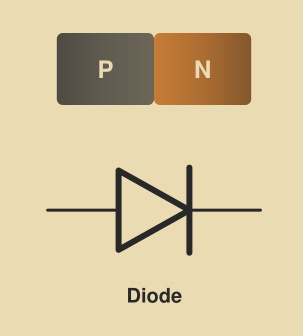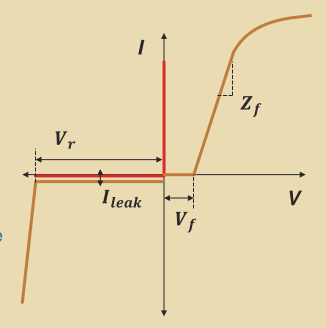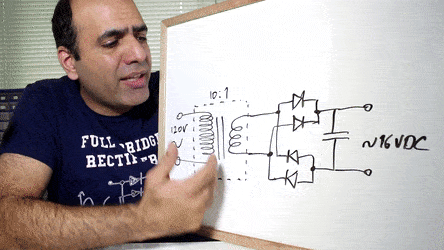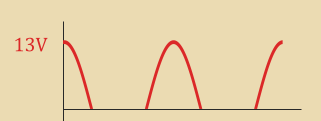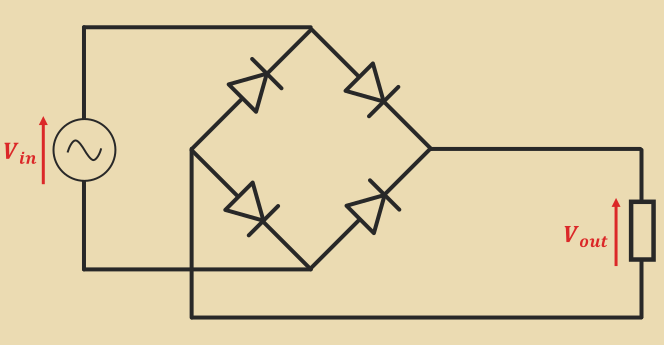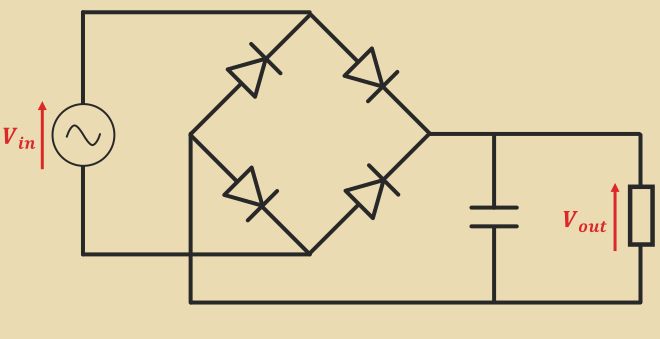2.2 KiB
Executable File
| author | date | title | tags | uuid | lecture_slides | lecture_notes | exercise_sheets | |||
|---|---|---|---|---|---|---|---|---|---|---|
| Akbar Rahman | \today | MMME2051 // Diodes and Rectifiers |
|
21cf8e5b-d808-412c-bb71-d298cdb02b4f |
|
Diodes are like one way valves for electricity --- they allow current to flow in the forward direction but not in the reverse.
Pure semiconductors are often intentionally doped by specific impurity to alter its electrical properties.
The most basic thing you can produce with this is the PN junction (or, a diode):
I_\text{leak}is the current that is able to flow in the reverse direction. It is a very small amount.- Forward voltage,
V_f, is the voltage required to move current forward. - Forward bias impedance,
Z_f, shows that the diode has a low resistance until a certain point. - At a certain point a diode will fail to block the reverse voltage (DC blocking voltage)
Rectification
How the rectifiers work are stepped through in lecture slides (pp. 32-44)
The most basic rectification is very wasteful:
This produces a waveform like this:
This is a step in the right direction but it is still very wasteful and not a smooth voltage at all.
A H-Bridge (full bridge) rectifier allows the negative cycle to be harnessed as well:
This produces a voltage like:
Capacitors can be added to smooth out the voltage:
This produces a voltage like:
